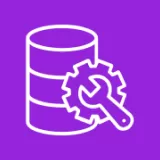Oracle’s Autonomous Database is changing the way companies utilize and manage their data. It not only automates complex, time-consuming, and redundant database tasks (which are normally performed manually), it also dramatically reduces risk by greatly minimizing human error. Its use of AI and machine learning means that it automates provisioning, tuning, patching, security, scaling, and recovery. In many cases, this frees up IT teams so that they can focus on higher-value activities instead of performing basic database tasks. But, is Oracle Autonomous Database the best fit for your company? Or, is there a large enough gap between your requirements and what Oracle Autonomous Database can do? Only a careful examination of its capabilities, costs, and the needs of your business can answer that.
Key Elements & Business Advantages
Self-driving & Self-tuning
There is potentially no feature of Oracle Autonomous Database that can deliver more business value than self-driving, and self-tuning capabilities. Self-driving means automation of provisioning, configuration, monitoring, performance tuning, and patching. Not only can this feature reduce the workload of database administrators, it can also minimize downtime and provide an overall more efficient and effective system. Oracle Autonomous Database continually monitors loads and dynamically adjusts resources in real time to ensure the system is adequately provided to handle any given operational workload and therefore remain responsive and fast.
Self-Securing
For many enterprises rated the highest risk is that of security; specifically, their sensitive data or data under regulatory requirements. Oracle’s Autonomous Database uses automatic encryption for data at rest and in transit. It applies security patching automatically and at scale, 365 days a year without outage; it detects threats to the organization in real-time; and, it demonstrates and provides user role-based access controls at granular levels so only what is needed to access required data can be done. This level of security means that the organization can still securely protect its data from any future breaches and meet strict regulations that govern compliance without executives needing to deduct time and effort away from the organization to measure risk on an oversite that is extremely dynamic in nature.
Self-Repairing & Highly Available
The concepts of redundancy and fault tolerance are inherit within Oracle’s Autonomous Database. As a result, the product reportedly achieves an uptime of 99.995% availability. With that level of availability, there is very little time; less than 2.5 minutes per month to engage with outages. This is crucial to mission critical applications where users must have unpresented access to data; such as the case with financial transactions, e-commerce for purchase orders, and healthcare systems.
Elastic Scalability
The ability to add or remove resources in accordance with actual workloads is now a requirement of business in order to react to unexpected situations quickly, to serve their interests. Oracle’s platform has the ability to automatically provision CPU, memory and storage and will ensure used resources meet the optimal condition for capacity, which allows you to maximize on what you have paid while freeing up time and money, perform wasted resource capacity and downtime that hurt your bottom line. It allows organizations to perform more work with less time being spent engaged with idle resources, such as purchased unnecessary server capacity, employees at your prior capacities, etc.
Integrated Analytics & Machine Learning
The Autonomous Database allows organizations to use advanced analytics and machine learning abilities more easily and effectively by providing both system workloads within the database. Organizations can filter and retrieve real-time insights on their data, build predictive models and run AI-driven applications without having to move data from storage systems into third-party analytics and from separate workloads. This streamlining of data workflows will reduce the time to generate insights and enable organizations to make more intelligent decisions for their business.
Cost Efficiency & Return on Investment (ROI)
Organizations realize cost savings in operations and size of the IT DBC team when deploying Oracle Autonomous Database by automating some manual processes that take time and have a potential for human error. Businesses are saving big bucks on license costs, maintenance, and hardware. Additionally, organizations will realize a good ROI, even if paid for upfront or as a subscription, due to costs associated with fewer operational costs and improved efficiency in application time to market, typically within a few years of deployment.
Ideal Use Cases
- Large Enterprises: Organizations leveraging a complex IT environment and requiring a robust scalable and secure database infrastructure will benefit best from the automation and resilience of Autonomous Database.
- Data-Intensive Businesses: Organizations handling simultaneous OLTP and BI workloads, such as financial services, healthcare and retailer, can take advantage of streamlined OLTP and centralized data assertions in a unified data model between their transactional and analytical applications and are prime candidates for Autonomous Database.
- Agile Development Teams: For development teams wanting to deliver new applications faster, but trying to spend less time managing and operating a database platform, will appreciate at least the automation features of the Autonomous Database.
Considerations
- Higher Expense: Oracle Autonomous Database runs on higher tier operating hardware with its supporting enterprise grade features. The costs might not be favorable for startups and small businesses with limited budgets and/or low volume applications.
- Limited Control/Customization: In many ways, automation reduces administrative burden, but automation limits access to the system inner workings and low level settings. Database teams that operate under a low level of database landscape control will have issues working within these parameters.
- Learning Curve & Ecosystem: When moving to Oracle Autonomous Database, it is important to understand Oracle Cloud infrastructure, licensing structure, and control utilities. Companies with limited experience using Oracle software will likely have an entry barrier to onboarding.
Successes
- Several companies in a variety of industries have provided impressive examples of the Oracle Autonomous Database implementations:
- A media company decreased reporting time from minutes to seconds, resulting in significant operational savings.
- A retail brand improved reporting time by a factor of 40, enabling faster decision making time, and more responsive change with market conditions.
- A logistics company increased order application process 100 times with nearly 99% savings in infrastructure costs, resulting in significant reductions in operational overhead.
Conclusion
Oracle Autonomous Database is a groundbreaking advancement in the database realm. It promises automated data management for complex enterprise workloads with high availability and a secure database environment. With AI-powered features, companies may greatly change how work is done by improving performance, security, and flexibility while lightening the burden on IT.
Although the platform’s high cost and low flexibility may diminish its fit for every organization (small organizations or organizations sticking to simple databases), considering your technical requirements, financial capabilities, and business plans is critical before committing to this innovative platform.
For organizations that want to advance their data infrastructure possibilities with automation and intelligence, Oracle Autonomous Database is an excellent strategic investment because businesses can find significant value and competitive advantage.










